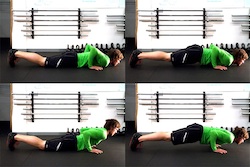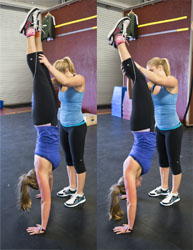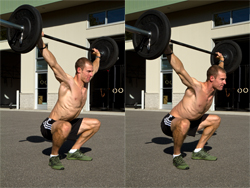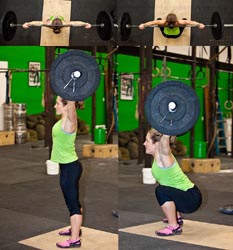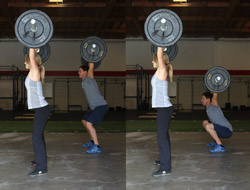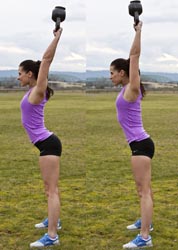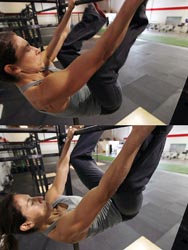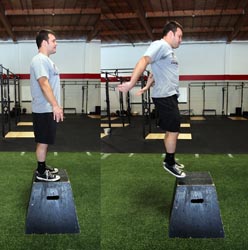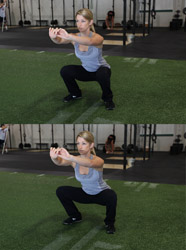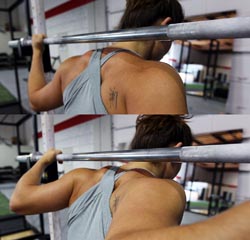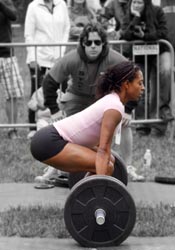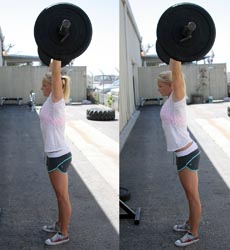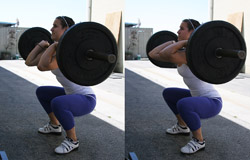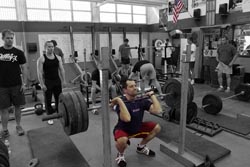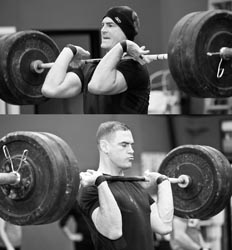Wod Tips to Gain Strength and Reduce Injury
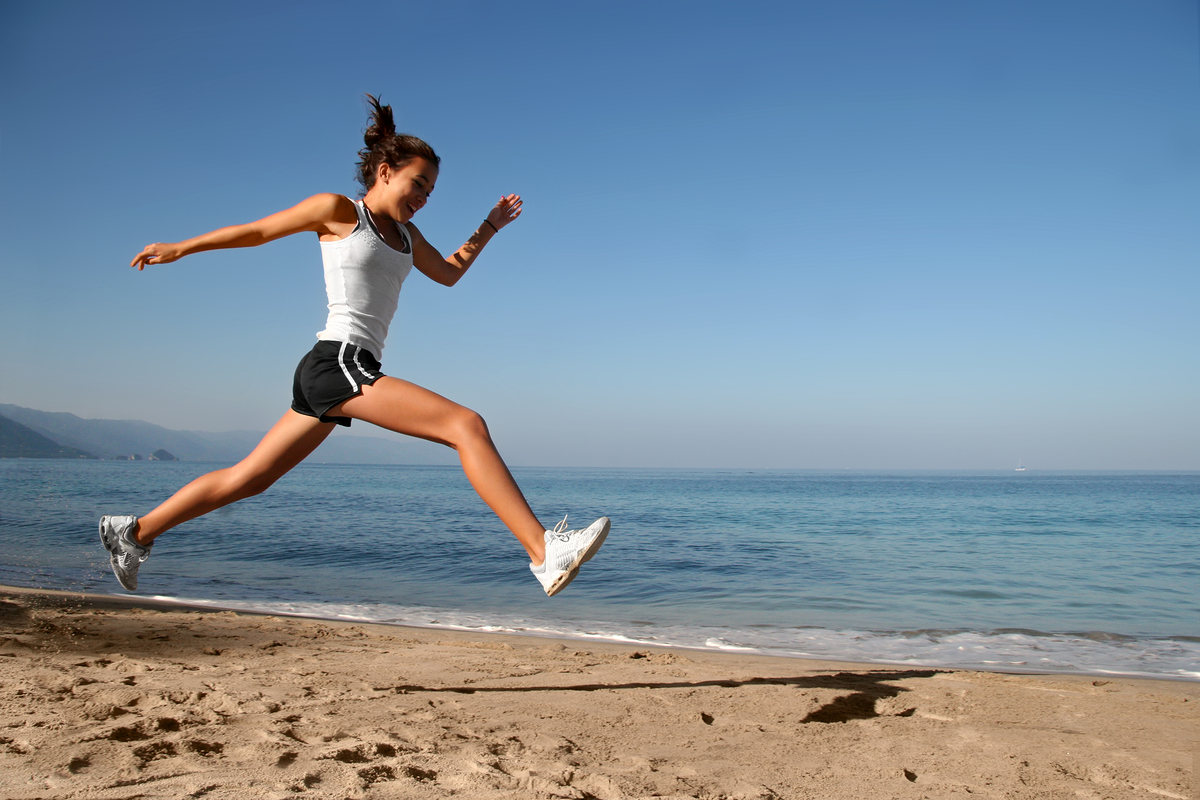
Here are some tips on how to increase strength, stay injury free and get that long awaited legit Rxd WOD finally!! Try to work on all these points when lifting and woding and you will see faster times and heavier lifts!!
Keeping the chest and elbows up, and the knees out, enables efficient transfer of power from from the legs and hips into the wallball.
At the bottom of the push-up the chest and thighs should come in contact with the ground(top left), rather than diving the chest(top right), dropping the hips(bottom left) or shorting the depth(bottom right).
Staying tight through abs, glutes, and legs creates a more stable handstand. Left pic very tight and controlled, Right pic very loose and not controlled.
In an immature overhead squat, the forward inclination of the torso requires additional rotation of the shoulder, which can be tolerated at lighter weights. Pic on left is good overhead squat. Pic on right is requiring more rotation due to lack of flexibility. Losing Power and Strength.
In the overhead squat, the path of the barbell is vertical and remains over the foot while its position relative to the head and angle of the torso can vary.
There is a tendency in high rep overhead squats and Air Squats to not reach full extension of the hip and knee. Pic on the left is a NO REP not fully extended or hips are Closed. Pic on the right is full extension or hips all the way OPEN.
Soft abs and glutes lead to poor, overextended alignment at the top of the swing. This is meaning weak core!! Stay tight like in the right pic!
Knees to elbows is different than knees to triceps. We do Knees to Elbows, NOT knees to triceps for a WOD to count as RXD!
For a legitimate box jump the hips must travel at least as high as when standing on the box. Full extension before dropping below top of box.
When squatting, the knees should track over the foot, not inside! Top pic knees are going forward. Bottom pic knees out over the direction of toes, perfect squat. Also upright Torso!
Bringing the hands in and raising the elbows creates a shelf for supporting the barbell.
Proper set up for the deadlift: Natural lumbar curve, hips higher than the knees, shoulders in front of the bar, weight on the heels.
Aligning the hips, shoulders and barbell over the base of support (left image) is stronger than with exaggerated lumbar extension (right image).
Pic 1- Solid. Body is completely aligned vertically
Pic 2- Weak core. Over exaggerated lumbar extension, losing power and strength
Pic 3- Tight shoulders. Not full range of motion and a NO REP
Laziness or lack of shoulder flexibility can result in an inadequate overhead position.
Any dropping of the elbows can be the difference between a made or missed lift! Right pic has great elbows!!
In a properly executed front squat, the load is born entirely by the shoulders, and not at all by the hands and fingers!
For a front squat or clean, get the elbows up with the load to rest upon the shoulders rather than in the hands(top pic). When going overhead, ie: thruster, push press, shoulder press, the elbows drop but still maximize the surface area of the body under the bar to prevent the bar from sliding down the chest in the dip phase of the lift(bottom pic).


